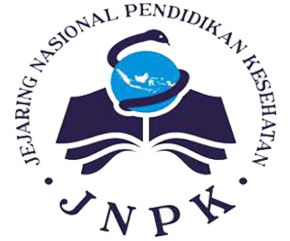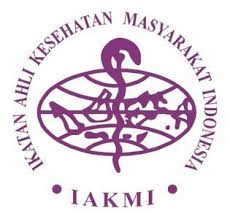Iklim Kerja Panas dan Konsumsi Air Minum Saat Kerja Terhadap Dehidrasi
Abstract
Lingkungan kerja yang panas dapat mengakibatkan gangguan kesehatan, salah satunya adalah dehidrasi. Dehidrasi adalah kondisi dimana kehilangan cairan tubuh yang berlebihan karena penggantian cairan yang tidak cukup akibat asupan yang tidak memenuhi kebutuhan tubuh dan terjadi peningkatan pengeluaran air sehingga dibutuhkan asupan cairan yang terpenuhi dengan konsumsi air minum yang cukup. Tujuan penelitian untuk mengetahui hubungan iklim kerja panas dan konsumsi air minum dengan dehidrasi pada pekerja PT. Candi Mekar Pemalang bagian weaving. Jenis penelitian cross sectional. Populasi pekerja 111 pekerja dan teknik sampel yang digunakan adalah purposive sampling sehingga sampel yang didapatkan 53 pekerja. Instrumen yang digunakan pengukuran iklim kerja dengan alat Quest Temp dan pengukuran dehidrasi menggunakan metode Berat Jenis Urin (BJU) dengan alat urinometer, serta kuesioner untuk mengetahui jumlah konsumsi air pekerja. Analisis data secara univariat dan bivariat. Hasil penelitian terdapat hubungan antara iklim kerja panas (p=0,00) dengan dehidrasi dan ada hubungan konsumsi air (p=0,001) dengan dehidrasi.
Kata Kunci: Dehidrasi, Iklim Kerja Panas, Konsumsi air, Pekerja Weaving Tekstil.
Workplaces with heat condition can cause heat-related illness, one of them is dehydration. Dehydration is a condition when a human’s body loses more fluid because the fluids coming through the body cannot supply the needs of the body itself and the increasing of fluid loss, that it needs more than enough water consumption to fulfill the need. The purpose of this study is to find out the correlation between Hot Work Environment and water consumption with dehydration toward the workers of PT Candi Mekar Pemalang in Weaving department. The type of research was cross sectional project. The worker population was 111 people and the type of sampling was using purposive sampling so that the sampling being used was 53 workers. The research instrument being used were an area heat monitor with Quest Temp tool and a dehydration-level monitor using the method of Urine Specific Gravity (BJU), together with a questionnaire in order to find out the quantity of the worker’s desire to drink. The data analysis varied from univariate and bivariate. Result of the research confirmed that there was a correlation between hot work environment (p=0,00) with dehydration and there was a correlation between water consumption (p=0,006) with dehydration.
Keywords: Dehydration, Hot work environment, water consumption, textile weaving workers





